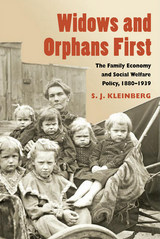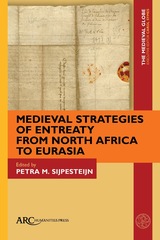
How did the vast number of Jewish immigrants from different regions of Eastern Europe form their American ethnic identity?
In his answer to this question, Daniel Soyer examines how Jewish immigrant hometown associations (landsmanshaftn) transformed old-world communal ties into vehicles for integration into American society. Focusing on New York--where some 3,000 associations enrolled nearly half a million members--this study is one of the first to explore the organizations' full range of activities, and to show how the newcomers exercised a high degree of agency in their growing identification with American society.
The wide variety of landsmanshaftn--from politically radical and secular to Orthodox and from fraternal order to congregation--illustrates the diversity of influences on immigrant culture. But nearly all of these societies adopted the democratic benefits and practices that were seen as the most positive aspects of American civic culture. In contrast to the old-country hierarchical dispensers of charity, the newcomers' associations relied on mutual aid for medical care, income support, burial, and other traditional forms of self-help. During World War I, the landsmanshaftn sent aid to their war-ravaged hometowns; by the 1930s, the common identity centered increasingly upon collective reminiscing and hometown nostalgia.
The example of the Jewish landsmanshaftn suggests that many immigrants cultivated their own identification with American society to a far greater extent than is usually recognized. It also suggests that they selectively identified with those aspects of American culture that allowed them to retain emotional attachments to old-country landscapes and a sense of kinship with those who shared their heritage.

The experiences of widows and their children during the Progressive Era and the New Deal depended on differences in local economies and values. How did these widely varied experiences impact the origins of the welfare state?
S. J. Kleinberg delves into the question by comparing widows' lives in three industrial cities with differing economic, ethnic, and racial bases. Government in Fall River, Massachusetts, saw employment as a solution to widows' poverty and as a result drastically limited public charity. In Pittsburgh, widows received sympathetic treatment. Few jobs existed for them or their children; indeed, the jobs for men were concentrated in "widowmaking" industries like steel and railroading. With a large African American population and a diverse economy that relied on inexpensive child and female labor, Baltimore limited funds for public services. African Americans adapted by establishing their own charitable institutions.
A fascinating comparative study, Widows and Orphans First offers a one-of-a-kind look at social welfare policy for widows and the role of children in society during a pivotal time in American history.
READERS
Browse our collection.
PUBLISHERS
See BiblioVault's publisher services.
STUDENT SERVICES
Files for college accessibility offices.
UChicago Accessibility Resources
home | accessibility | search | about | contact us
BiblioVault ® 2001 - 2024
The University of Chicago Press









